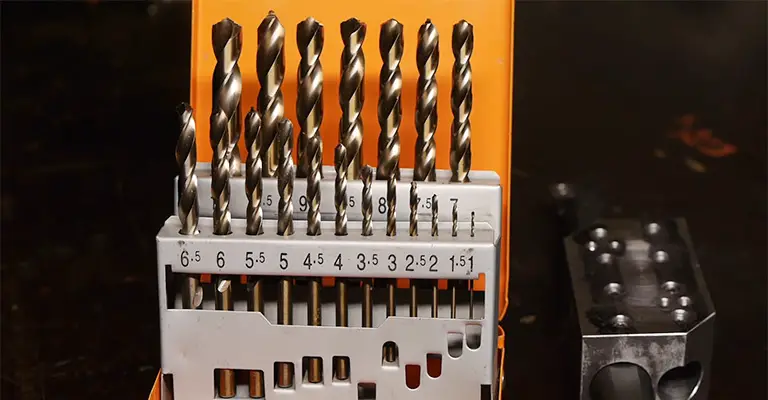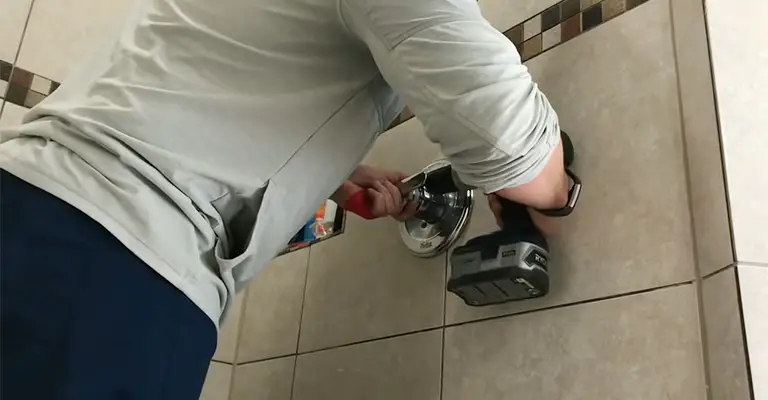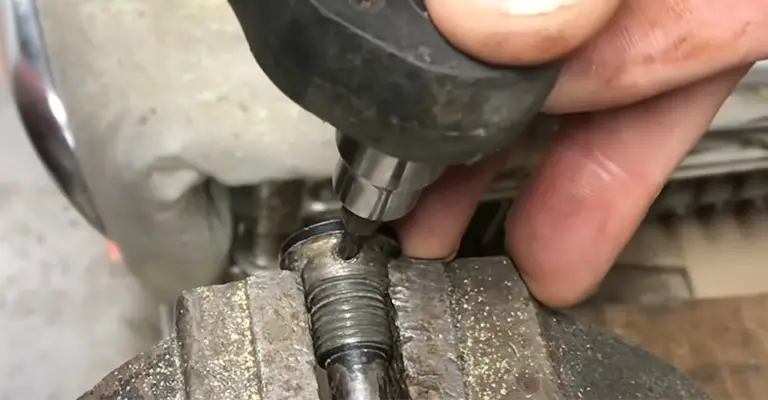Do you find yourself facing a frustrating problem with your shower faucet? A stripped screw can be a major obstacle, but don’t worry!
There’s no need to call in a professional or even replace the entire faucet. With the right tools and techniques, removing a stripped screw from your shower faucet can be a breeze.
If you find the set screw is stripped, a handy trick is to attach a rubber band to the end of the Allen key. This can fill the gap and provide enough grip to turn the screw.
Stripped screws are a common issue when it comes to repairing or replacing shower faucets. A stripped screw is one that has been damaged to the point where it can no longer be gripped by a screwdriver, making it difficult to remove.
In such a scenario, you may think that you need to replace the entire faucet, but there are several methods that can be used to remove a stripped screw from a shower faucet without causing any damage.
This guide will explore some of the most effective ways to remove a stripped screw from a shower faucet and get your repair or replacement back on track.
![How To Remove A Stripped Screw From A Shower Faucet? [Quick DIY Tips]](https://www.gofulldiy.com/wp-content/uploads/2023/02/Remove-A-Stripped-Screw-From-A-Shower-Faucet.jpg)
Understanding Shower Faucet Screws
There are two types of screws included with the shower faucet. It is necessary to understand the details about these screws to remove a stripped set screw.
- Allen Head: This nut has a threaded end with a small head. In addition to its other name, it is also known as a socket head cap screw. This tool has a cylindrical head that receives an Allen wrench for fastening and removing items.
- Phillips Head: Phillips screws are similar in appearance to crosses. Sizes and shapes are available, and it comes with a Phillips screwdriver.
Due to their soft nature, set screws need to be extracted carefully with a screw extractor. As a result, it may break the faucet handle.
How To Remove A Stripped Screw From A Shower Faucet?
Taking apart a showerhead typically only takes a few minutes unless the screws are stripped. Cobalt drill bits can remove stripped screws without damaging them, which is not possible with standard drill bits.
Let’s explore how we can remove a stripped screw from a showerhead quickly and easily, regardless of whether we are swapping drill bits or drilling out the head. It’s inevitable that home repairs will need to be made every now and then.
Repairs are most commonly needed in the bathroom, most frequently in the sink, bathtub, or shower. Repairs can be successful, or they can drag on for longer than they need to if you know how to approach them correctly.
It can be challenging to remove the shower faucet or the handle of a faucet when trying to remove it. As a result, the screws can be stripped out, making the removal process even more difficult.
The stripped screw must be drilled out from the center to be removed. In most cases, you can accomplish the task with the right tools.
Step 1: Cobalt Drill Bit

You will need two or three tools to complete this task. There is also an optional third step (some kind of screw extractor), but it can certainly simplify the final step. A drill and cobalt drill bit are the only other items you need.
You should insert that cobalt drill bit into your drill. In order to fit the bit into the head slot on the screw, it needs to be just a little bigger than the slot.
Ninety-nine percent of the time, set screws will have an Allen head or Phillips head. If you’re going to use a cobalt bit, make sure it fits inside the head of the stripped screw just enough.
Step 2: Drill
As soon as you have the appropriate cobalt drill bit, start drilling out the center of the head. It is sufficient to drill through the screw’s head’s center so that the bit passes through its bottom.
Make sure you torque down carefully and patiently here; don’t just force things. You will need to swap out bits as you pass the screw head bottom.
Obtain a cobalt bit that matches the screw head’s diameter and replace your current cobalt bit. Getting closer to that diameter will produce better results.
Step 3: Drill Out The Head

Now that you have swapped your bits, you can drill out the stripped screw head. In the previous step, you created a hole.
Now you need to drill into that hole. Prepare the screw head for drilling. Don’t be surprised if it takes a few minutes to finish; it may take a little time.
You will need to drill into the stripped screw head until you reach the inside diameter of the handle. Keep your pace slow and patient to avoid overdoing it. The drill bit should now be removed from the handle when you reach this point.
Step 4: Remove The Faucet Handle
Now that the faucet handle has been moved away from the faucet, you can turn it on by pulling it. Please do not worry if the tape does not come off cleanly. Depending on the size of the handle, you may need to jiggle it a bit to release it.
The handle can sometimes become stuck on the slivers created during the drilling process. A pair of locking pliers is also useful for removing the faucet from the stripped screw.
You will likely have an easier time removing the faucet if you have a good grip on it. Depending on the tools you have available, it is up to you.
Other Ways To Remove A Stripped Screw

You are likely to deal with that inconvenience more than once when drilling out a stripped screw in your shower.
Screws of all kinds are used in several things in our daily lives. Sometimes, those screws seem impossible to remove and get stripped out. There is good news about it: You can minimize its impact to a minor inconvenience.
Turning that stripped screw back into a usable shape with a few helpful tips is possible. You can even carry out some of these tips with just a few household items.
1. If the Head is Phillips, Use a Flat Head
Phillips and Allen screw heads tend to dominate the screw head market. Hence, the next time you stare at a Phillips head screw that won’t turn, reach for your handy flathead screwdriver.
You should ensure that the flat head is narrow enough to fit into the Phillips head hole. To make this work, you will need to exert a bit of elbow grease.
Bringing the rubber band into play is a good strategy to find an effective one. This will make your screwdriver easier to grip by introducing the rubber band.
A hammer can also tap your screwdriver to permeate the stripped-out screw’s head, giving you a better grip.
2. Try Pulling It Out With Pliers
The following step will only work if you see any daylight between the head of the stripped screw and the surface where it is attached.
You will need another method if you don’t see daylight, indicating the screw has not been loosened. To remove a stripped screw using pliers if you see daylight, you have two options:
Try to get a grip. To gain a good grip on the screw, you may need to use locking pliers (aka vise grips). Getting the screw out may prove difficult if you cannot grasp it.
Use another method if you cannot grab it. Your frustration will likely result in a lack of results, and you will probably feel frustrated.
Twist and pull. There can be a difference in this part depending on how deeply embedded the screw is and how severely it has been stripped.
Depending on how firmly you hold the screw, you may be able to pull the screw out or slowly turn the screw. Until the screw has been removed from the surface, keep working at it.
The method might take a little longer than other methods, but it generally works pretty well. Eventually, the screw will come out of the material where it rests as long as you can turn it.
3. Use Rubber Bands to Remove a Stripped Screw
What if you could remove a stripped screw with nothing more than a rubber band and your drill? There’s no doubt about it; it can be that simple. You can remove a stripped screw with a rubber band by following these steps:
Put the rubber band over the top of the stripped screw. Because the screw (which normally did that) has been stripped out, the rubber band provides something to grip onto for the drill.
The only thing you need to do is lay your rubber band over the screw that has been stripped out.
Slowly unscrew. The drill (a screwdriver could work, too) should be positioned so that the point pushes down on the surface of the rubber band while the rubber band is still in place.
When the stripped-out screw starts turning with the drill or screwdriver, the stripped-out screw should also turn.
No rubber bands? Try this. You don’t need to worry if you do not have any rubber bands lying around or don’t want to run to the store. A kitchen sponge with an abrasive side could be substituted for steel wool.
4. Drill Out a New Hole
There is only one major difference between this and the “how-to” above: you don’t need anything else to pull the stripped-out screw out except a drill.
Essentially, what you want to do is drill into the stripped-out screw so that your drill will grip better.
Just make sure that you use a bit designed for drilling into the metal instead of wood. Drilling too deeply into the stripped-out screw may also result in damage.
Too much force could cause the head of the screw to pop off, making removal more difficult. To achieve a better grip, drill just far enough to allow the original bit to go deeper.
Here’s How to Avoid Stripping the Screws Again:
The following tips will help you avoid stripping screws:
- Use drill machines carefully, and don’t apply too much pressure.
- The drilling angle should always be 90 degrees.
- Before screwing or unscrewing, ensure that the tip is firmly seated into the screw head.
- You should use a screwdriver with the correct size and design.
- Use the correct size drill bit.
Final Words
When removing a stripped screw from a shower faucet, the key is to drill the right hole with the drill bit. Using the locking pliers set or adjustable wrench, you can easily remove the set stripped screw by attaching the extractor inside it.
You will unlikely spend more than five minutes removing the screws. Ensure you wear gloves in a kitchen or bathroom where removing the screw from the faucet handle could cause an accident.






